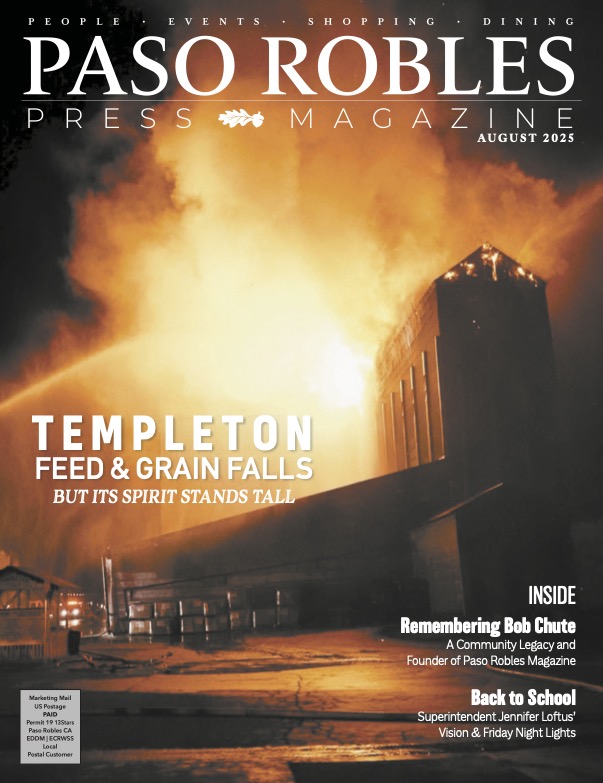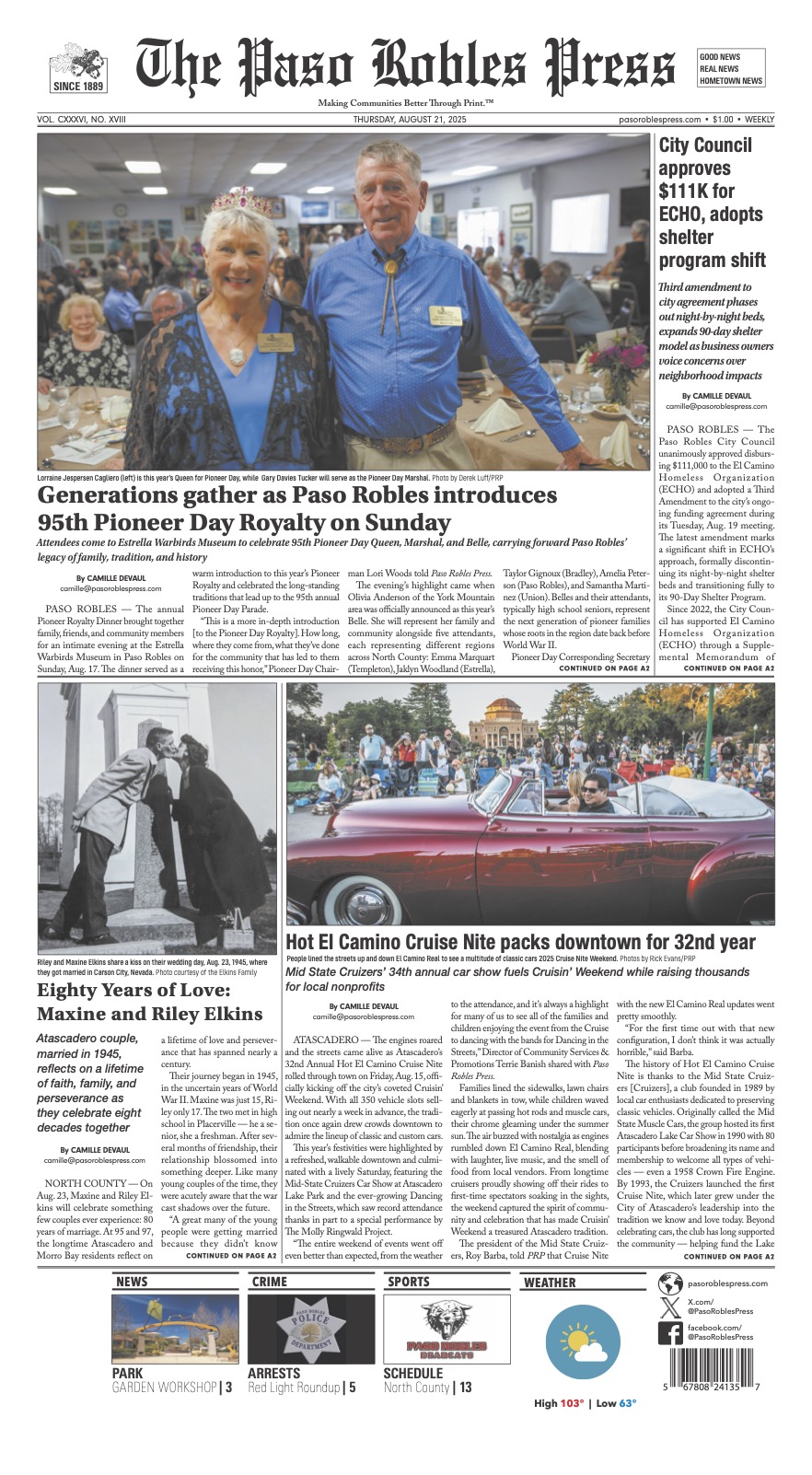The historic Rios-Caledonia Adobe just south of Mission San Miguel, was built circa 1836 by Salinian Indians under the direction of Mexican Colonel Petronilo Rios. Over the years it was sold several times but not kept up and so began to decline.
In 1903 the Rios-Caledonia Adobe and a large wooden barn then sitting on 160 acres was purchased by a family from Sweden named Nygren. They moved into the Spanish-style two-story adobe and Mr. Nygren farmed the property.
In June, 1907, their third daughter arrived. Anna Nygren Hebel would be the last child born in the old adobe. In 1970, she wrote a charming account of growing up there for Friends of the Adobes. She entitled it, “The Old Caledonia on El Camino Real.” Here are some excerpts from her story:
“Mother was a particular housekeeper and the impossible job of keeping the worn wooden floors clean and the broken plastered walls neat discouraged her, but the greatest bother was the vermin that had collected in the cracks through the years of disuse. ‘I can’t have bugs,’ she flatly stated, so papa built a house across the creek (which ran through a deep ditch on the south side of the Adobe). He had torn down the dilapidated barn… scraped and plowed and leveled the ground for it was the best place for the wooden house.”
Anna was three at the time but her memories were vivid. The children walked up the hill to the schoolhouse on the “mesa,” (now K Street and current site of the park) “Along the old road behind the mission where we walked on our way to school were peach trees from old Mission plantings… the beautiful deep pink blossoms were picked and taken to school each spring.”
The house was close to the river and on hot days the children could swim in pools in the river sands.
“The heavy rains and floods of 1913-1914 scoured out the brush and trees along our banks… where the trees had not been cut, the raging water took out an acre or two of the neighbor’s land. It was hard making a living on the place. The ground was rich… from the old barn yard.”
But it was too rich with manure and burned their bumper crop of vegetables. Hungry rabbits and coyotes dined in the garden. And it was often raided by itinerants (generally called ‘tramps’) who roamed the roads begging and breaking into vacant buildings (the old Adobe was a constant target, even when boarded up) using any furniture and even floorboards or door and window frames for firewood. Around 1917, Anna’s father sold the tiles from the roof; In 1920 he sold four acres. In 1922 he sold six acres to Mr. Dorries, who ultimately managed to acquire the entire property.
Copies of Anna’s story are available in the Rios-Caledonia Adobe Gift Shop.










